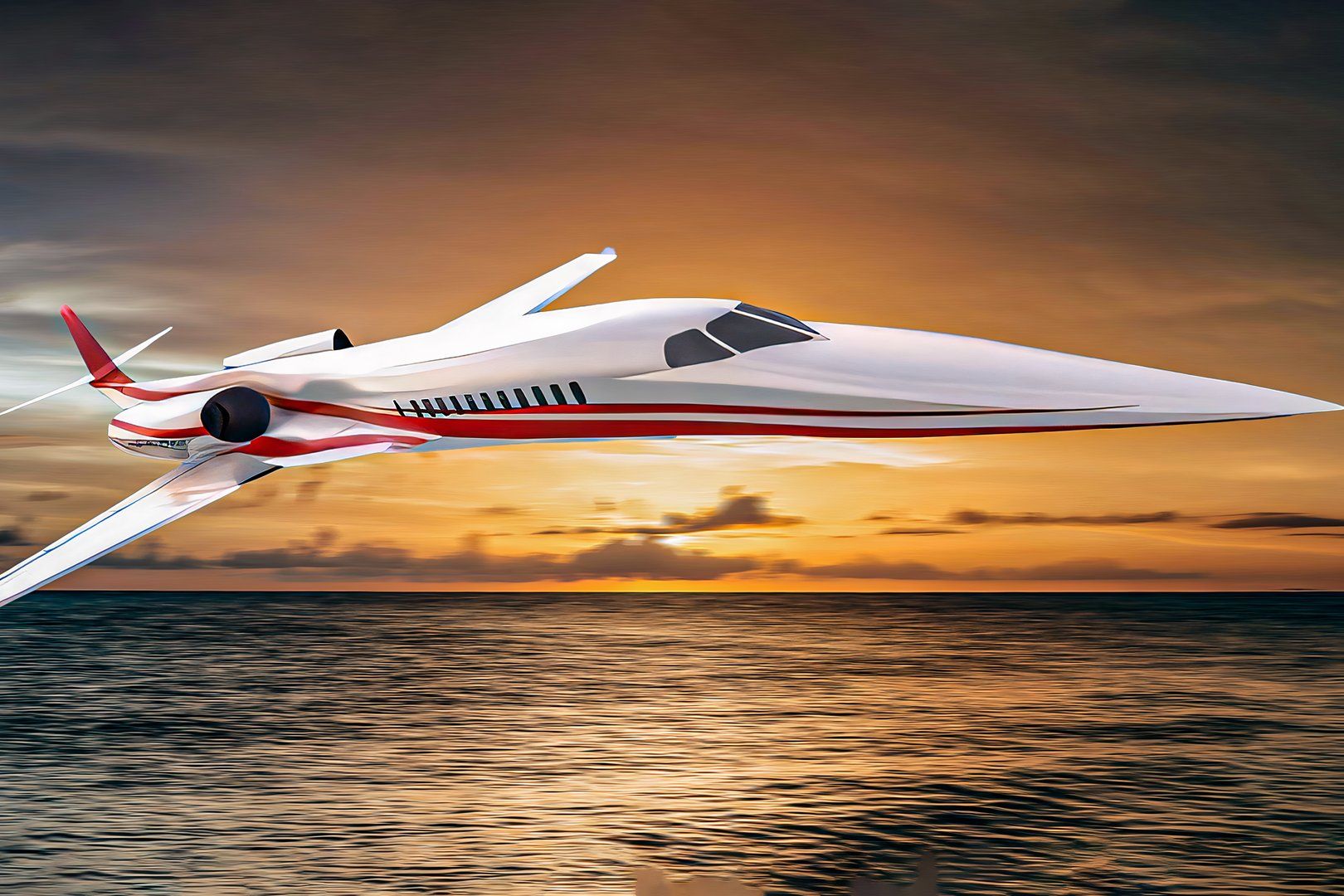The concept of flying supersonic has been the subject of much research and development since Concorde was retired in 2003. This aircraft was synonymous with speed and style, bringing the US and Europe closer together. Companies like Boom Supersonic are working hard to return it to commercial service.
However, private aviation is another sector where supersonic flight could be the perfect fit. Why would it be the perfect fit? Business owners who rely on private jets use them to make their enterprises more efficient. In just one day, management can attend meetings in multiple locations on a continent.

Let's take an example. Imagine a corporation headquartered in New York, with branch offices in Dallas, Chicago, and Miami. The company possesses a private aircraft that can depart from Teterboro at 8:00 a.
m., enabling the executives to conduct their morning briefing in the air. They would land in Chicago shortly before 10:00 a.
m., attend a meeting until noon, depart from Midway at 1:00 p.m.
, and arrive in Dallas at 4:00 p.m. After spending a few hours in Dallas, they would leave at 6:00 p.
m. and reach Miami for a dinner meeting with the management. They would return to New Jersey the following morning.
Flying commercially would likely take multiple days as airlines operate on set schedules and can be subject to delays and cancellations, which are much less common in private aviation. Using subsonic private jets while cutting journeys still makes certain flights long This is where a supersonic private jet would come in handy. The restricted area has been imposed due to a fear of terrorist attacks.
What aircraft could a corporation consider No supersonic aircraft, commercial or private, are being produced right now, but there are a few models in development that one could consider. One recent proposal, the Aerion AS2, offered the following specifications: The Aerion was designed with a crew of two and aimed to accommodate 8 to 11 passengers. It was expected to be powered by three General Electric Affinity turbofan engines, each providing 18,000 lbf (80 kN) of thrust.
Performance-wise, it had a potential cruise speed of 803 knots (924 mph, 1,487 km/h) at Mach 1.4 with a range of 4,200 nautical miles (4,800 mi, 7,800 km) at Mach 1.4, with an extended range of 5,400 NM (10,000 km) at Mach 0.
95. Why would it have been advantageous Taking our last leg on our imaginary route between Dallas and Miami, the travel time would have been only 1:12 minutes instead of 2:16 minutes on a subsonic jet if the passengers decided to go supersonic . This means that the imaginary businessman could have arrived in Miami at 5 p.
m., in time for an evening meeting and meal with his local employees. Considering the scenario where the trip is planned for two days, and the organization has an office in London, utilizing the fastest private jet available today, the Gulfstream G700 , the journey would require approximately 6 hours to get to the British capital.
It is unrealistic to anticipate the management's return to New York within an additional 24 hours. The G700 is Gulfstream's flagship jet and the largest business jet in its product portfolio..
Here, even the Aerion would have been a bit too slow, cutting the journey time to only five hours, so let's push the imagination a little bit further - let's imagine Boom Supersonic was to develop a VIP version of their Overture jet (which could happen given the USAF is a client) The Overture' s top speed of Mach 1.7, around 1300mph, would cut the journey time between Miami and London to just 3 hours 30 minutes, so a day trip to the City is within reach. These carriers could prove a perfect fit for the supersonic aircraft.
What are the limitations of supersonic private aviation? A commercial airliner would take around 8 hour s to complete a Miami to London flight. The G700, however, can go slightly faster. With a top speed of 717 mph, it can, in theory, reach the UK's capital and save two hours over a commercial flight.
So speed is already addressed. The fuel consumption of supersonic aircraft, particularly in comparison to the Concorde, is a topic of interest. Despite the newer supersonic aircraft being designed for improved efficiency, the Concorde remains a reference point as the only SST aircraft in operation.
According to PBS, the Concorde carries approximately 119,500 liters (31,569 gallons) of fuel and consumes around 25,629 liters (6,771 gallons) per hour while in flight. The G700 consumes 509 gallons per hour of fuel, which is significantly more fuel-efficient than the Concorde. However, with no SST aircraft in service now, it is hard to verify the claims of companies that want to restore supersonic jets to service.
After its initial announcement, the development of Aerion AS2's first flight was pushed back to 2024 and then to 2025. In September 2020, Aerion initiated wind tunnel testing at Onera, accumulating the equivalent of 78,000 nautical miles flown by November. The wind tunnel tests, reaching speeds of Mach 3, facilitated high-speed performance evaluations, loads, stability measurements, and control of transonic and supersonic velocities to conclude the preliminary design review successfully.
Despite having over $500 million invested, the total development cost was estimated to reach $5 billion, surpassing the 2018 prediction by 25%. Development activities were halted when Aerion ceased operations in May 2021. While Concorde was a phenomenal achievement, only a select group of passengers could afford to fly on the supersonic airliner.
The plane reduced the flight time between New York and London to between 3.5 and 4 hours. It even once set a record time of just 2 hours, 52 minutes, and 59 seconds on this route.
Still, most passengers had to settle for the standard jet service amid the high costs of flying Concorde. Boom Supersonic's leadership said that Overture tickets will be 75% cheaper than its predecessor, opening the door to more clientele. However, despite saving several hours per flight, would most passengers rather save even more and hop on a standard flight? Let us know what you think below! Will we ever see private jets fly supersonic While, like all of us, I would love to see any kind of civil jet cross the sound barrier, the development costs are very expensive.
Even if private aviation is a luxury, I struggle to see wealthy individuals invest in a technology that isn't fully mature yet. Hopefully, should the Boom Supersonic Overture work, we might see more start-ups return the concept to the VVIP aircraft drawing board. Still, unfortunately, it seems unlikely for now.
.



















